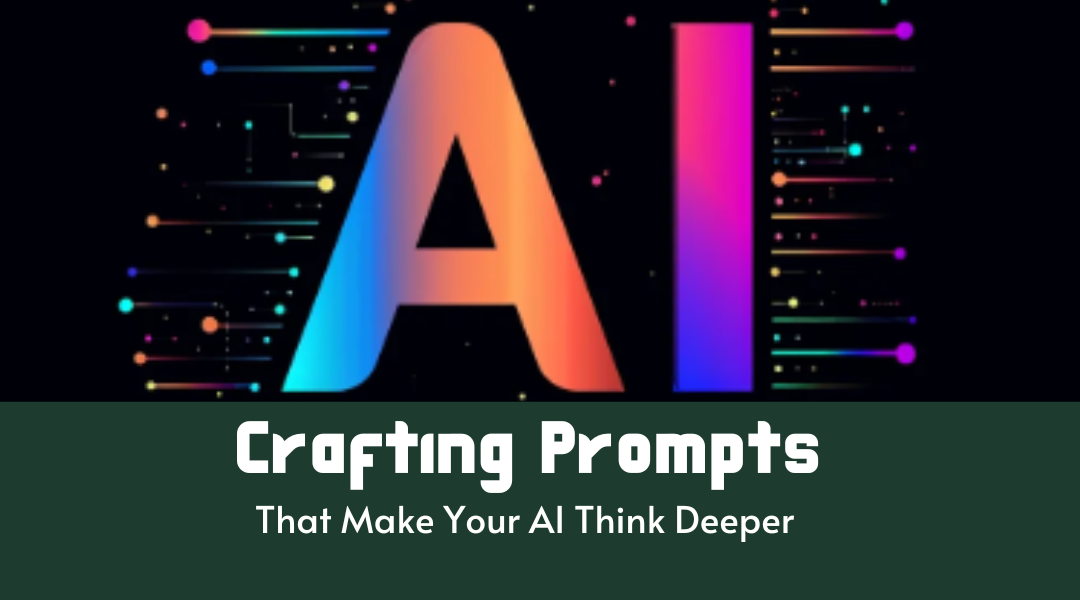So, you’ve got the hang of asking your AI clear questions and are seeing solid results. That’s the foundation. But what separates a casual user from a true power user is the ability to move beyond simple commands and into the realm of strategic prompting. This is where you stop just asking questions and start designing a thought process for the AI.
Think of it like this: a novice chef follows a recipe step-by-step. A master chef understands the why behind each step—how searing locks in flavor, how resting meat redistributes juices—and uses that knowledge to improvise and create something extraordinary. Advanced prompt engineering is about understanding the “why” of how the AI processes information, allowing you to guide it to more sophisticated, nuanced, and reliable outputs.
Let’s explore some of these master-chef techniques.
1. The Blueprint Method: Architecting Complex Tasks
Instead of handing the AI one massive, monolithic task, break it down like a project manager outlining a blueprint. This method provides a clear structure, reducing ambiguity and ensuring the model addresses every facet of your request.
- The Old Way: “Write a report on the future of remote work.”
- The Blueprint Method:
“Act as a futurist analyst. Construct a report on the future of remote work by following this structure:
a) Identification: List the top three technological innovations (e.g., VR integration, asynchronous collaboration tools) most likely to reshape remote work in the next five years.
b) Analysis: For each innovation, analyze one major societal impact and one potential economic disruption.
c) Synthesis: Based on your analysis, propose two actionable recommendations for a medium-sized business preparing for this future.
Ensure the tone is professional and insightful, aimed at a C-suite audience.”
This doesn’t just ask for a report; it designs the very methodology the AI should use to create it.
2. The Stress Test: Probing for Weaknesses and Bias
To truly trust your AI’s output, you need to know where its reasoning might falter. Adversarial prompting is like a stress test for the model’s logic and knowledge base. You intentionally introduce complexity, contradiction, or edge cases to see how it responds.
- Example:
“Some argue that a company’s primary duty is to maximize shareholder value, even if it leads to short-term environmental costs. Others contend that sustainable, long-term thinking ultimately creates more shareholder value. Present the strongest case for each perspective, then reconcile these opposing views into a single, coherent corporate philosophy that acknowledges the tension between them.”
This prompt forces the model to hold two conflicting ideas in its “mind” at once and synthesize them, rather than just picking a side. It tests depth, critical thinking, and ethical reasoning.
3. The Invisible Framework: Setting the Unspoken Rules
Often, what goes unsaid is the most important part of a request. Meta-linguistic prompting is about making those unspoken rules explicit. You’re not just asking for content; you’re giving direct, self-referential instructions about the form, style, and context of the response.
- Example 1 (Format): “Explain the concept of quantum entanglement. Your entire response must be a series of three bullet points. The first bullet should define it for a high school student. The second should use a vivid analogy (like a pair of magic dice that always roll the same number, even across galaxies). The third should mention one real-world technology it might enable.”
- Example 2 (Persona & Style): “You are a tour guide in Rome in 1954. Describe the Trevi Fountain to a group of American tourists, weaving in one local legend about its origins. Your language should be colorful and evocative, fitting the post-war ‘La Dolce Vita’ era.”
This technique gives you immense control over the personality and presentation of the output.
4. The Lens Technique: Focusing the AI’s Knowledge
An AI has been trained on a vast corpus of information. Cognitive anchoring is the act of putting a specific lens on that camera, focusing its attention on a particular domain, theory, or school of thought. You’re telling the AI which chapter of its vast library to pull from.
- Example: “Analyze the recent trend of ‘quiet quitting’ through the lens of game theory. Frame the employee and employer as players in a strategic interaction. What might be the dominant strategies for each, and what is the most likely Nash equilibrium that emerges in a market where this behavior becomes common?”
Without the anchor (“through the lens of game theory”), the analysis might be sociological or psychological. With it, the response is immediately more focused, academic, and insightful.
Conclusion: The Art of Collaborative Thought
Mastering these techniques—architecting with blueprints, probing with stress tests, directing with invisible frameworks, and focusing with specific lenses—transforms your interaction with AI from a simple query-and-response into a true collaboration.
It’s no longer about just getting an answer; it’s about designing the cognitive path the AI takes to arrive there. This shift in approach allows you to tackle profoundly complex problems, generate truly original content, and gain a much deeper understanding of both your subject matter and the AI’s capabilities. The ultimate goal is to make the technology an extension of your own intellect, a partner capable of navigating nuance and complexity at your direction. By investing in the art of the prompt, you’re not just using a tool; you’re honing a critical skill for the future.
